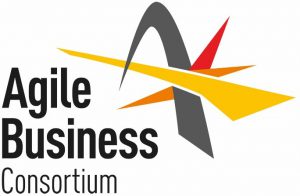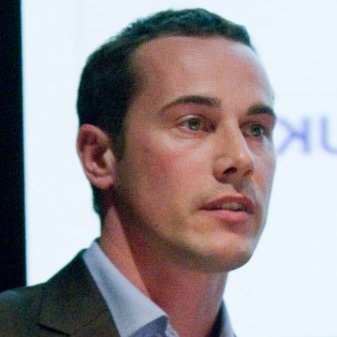Terri Harrington
Head of Portfolio Insight IPA Cabinet Office
Responding to the challenges of reporting performance.

Synopsis: Every project needs an appropriate framework in place to manage its performance effectively. Utilising our experience of improving performance management of multi-billion pound programmes within a major government organisation, we discuss some of the key challenges and pitfalls that we have witnessed and how to overcome them.
Iain Morton iain.morton@bmt-hqs.com

Iain joined BMT Hi-Q Sigma in 2014 with 5 years’ experience working for major defence organisations Thales and AgustaWestland. He has strong project management, change management, project controls, risk management and performance management expertise gained through leading and supporting teams both within Government and industry. More recently, Iain has been implementing consistent performance management practices across a multi-billion portfolio of work within a major Government organisation.
BMT Hi-Q Sigma

http://www.bmt-hqs.com/
https://www.linkedin.com/company-beta/562707/
BMT Hi-Q Sigma is a Management Consultancy providing services across Government, Defence, Energy and Transport sectors to improve Portfolio, Programme and Project performance.
We provide pragmatic advice from strategy to delivery, tailoring best practice to your specific needs. Working within your teams we build successful, effective relationships, transferring skills and knowledge to create sustainable change.
BMT Hi-Q Sigma is an operating company of BMT Group and an Employee Benefit Trust, which guarantees our independence and ensures we act in the long term benefit of all our staff.
Summary:
Emotional intelligence and NLP for better project people
Lysa will guide us through a fun and interactive session where she will introduce us to a simple language tool that supports Project Managers to engage, influence and inspire internal and external stakeholders with integrity to create win-win outcomes.
Learn how your own subjective perception of a person or situation can directly affect your skills, behaviours and effectiveness. Through exploring how we think and feel we can gain control of what we do and say to maximise our potential and become better project people.
Bio:

Lysa is the MD of LMA Training & Consultancy which she founded in 2007. LMA provides a variety of services that supports the strategic, organisational and people development of a wide range of private, public and third sector organisations. Lysa has many years of experience sitting on boards ranging from community development trusts through to the NHS. She is an RSA Fellow, an NLP Master Practitioner and accredited trainer, an ILM accredited Executive Coach and a member of the EMCC (European Mentoring and Coaching Council). Lysa completed her Executive MBA at Newcastle University Business School where she is also an Associate Lecturer. One of Lysa’s recent achievements is the development of a strategic benefits realisation tool that has been used at governmental level to ensure the full engagement of all stakeholders needed to realise the benefits from a project.
LMA Linkedin: https://www.linkedin.com/in/lysa-morrison
LMA Eventbrite page: http://lma-events.eventbrite.com?s=45672690
LMA Twitter: https://twitter.com/lysam8

Back to Conference programme
Chairman, Agile Business Consortium
|
Synopsis / Abstract
|
In this presentation, we will explore how to create and run portfolios of projects, programmes and business as usual initiatives in an agile way.
Some of the themes explored will be:
– The Agile Organisation and how it can help CEOs and other senior executives reach their goals, do more for less and be competitive and responsive in an a constantly changing world. – What is Agile Portfolio Management, how it contributes to the agile business, how it differs from traditional portfolio management . – Key tips on how to make Agile Portfolio Management work in your organisations |
|
Target Audience
|
Portfolio and PMO Managers, Senior executives, anyone else involved in portfolios |
|
What will the delegate take away from this session:
|
An understanding of what Agile Portfolio Management is and how to make it successful in their organisations |

Back to Conference programme
Summary:
Francesca Beard is a Malaysian-born poet who represents the best of British live literature around the world with the British Council. In June 2016, she won a standing ovation for a Tedx talk on Ingenuity and Creative Invention.
She’s written for The Barbican, the BBC, The Tower of London, Hampton Court Palace, The Metropolitan Police, The Royal Court, The Young Vic and BBC Radio. Her one woman show, ‘Chinese Whispers’ was produced by Apples and Snakes and her family show, ‘Animal Olympics’ was commissioned for South Bank Centre’s Imagine Festival. London Metro has called her ‘The Queen of British performance poetry.’ Her new show, supported by Arts Council England, is called ‘How to Survive a Post-Truth Apocalypse.’

https://youtu.be/cCnMCKgcU-8
To find out more, please visit www.francescabeard.com
Press and Reviews
“Spine-tingling… Witty and narcotic.” The Independent
“…witty and whimsical… a quality-guarantee.”; “utterly magical’. Evening Standard
“Sensuous and funny” Time Out
“The Queen of British performance poetry… one of our finest cartographers of the human heart.” London Metro
“Brilliant, illuminating all manner of euphemisms, dreams, lies and hidden agendas.”
The Scotsman
Back to Conference programme
Summary: Simon will talk about his experience of managing and controlling London Undergrounds’ Bank Station Capacity Upgrade project as it transitioned from design to construction. Simon also studied the transition as a part of his PhD and will draw on the benefits of undertaking research both in practice and for practice. Simon’s PhD research investigates how ‘time’ influences construction project organisations as they move from the early ‘development’ phase of design and statutory planning, through to the ‘delivery’ phase of construction. Specifically looking at how the ‘temporary’ nature of projects, their pre-defined dates and resulting critical paths, influences the capability of project organisations through the (re)creation of patterns of interdependent working.

Compulsive builder and advocate for construction and engineering, and in particular the role of women, Sandi Rhys Jones has nearly forty years experience in strategic marketing and management, communications and training for technical, professional and business to business organisations. Since co-founding RhysJones Consultants in 1976, she has worked for a wide range of clients, including consultants, contractors, suppliers, representative organisations, local and national government. As well as running her business she leads the national mentoring programme for the Association of Women in Property and is a member of the Seamore project board at the National Museum of the Royal Navy, tasked with delivering an innovative centre for Discovery and a new home for the Royal Marines Museum. She is increasingly in demand as a coach and mentor, particularly for women in non-traditional occupations, and also as a chair and facilitator at conferences, workshops and seminars. The Constructive Women blog draws on her working life. Parallel Universe reflects the other side – wife, mother, grandmother, cook, gardener, traveller, music lover.
Chris Pond , Senior Solutions Specialist for PPM at Microsoft, who will be speaking at Bringing Projects to Life on 17 June reflects on his experience of Project and Portfolio Management.
, Senior Solutions Specialist for PPM at Microsoft, who will be speaking at Bringing Projects to Life on 17 June reflects on his experience of Project and Portfolio Management.
In the 18 years that I have been in the industry, from supporting customers with change initiatives through to delivering supporting tools, the market has changed considerably.
In the 90s we had the big players in Artemis, Primavera and ABT, with Microsoft Project starting to gain traction on the desktop. My first introduction was Project 4.0, while the first central project repository toolset from Microsoft was launched in 2000.
More recently we have the advent of “born in the cloud” task / work / project management tools. One of the benefits of these tools, has been an increase in understanding that to enable repeatable success in an organisation, we need to improve how we plan and execute our projects.

There are three recurrent themes we use when speaking to customers
1. Agility 2. Engagement 3. Success
Many of the customers I speak to want to discuss Agile. The first part of this conversation depends on the capability of the customers and what they really mean, as the term “agile” is regularly used interchangeably:
The term “bi-modal IT” is also regularly being added to the conversation. This was first described by Gartner in 2014, and is outlined in their glossary.
Bimodal IT is the practice of managing two separate, coherent modes of IT delivery, one focused on stability and the other on agility. Mode 1 is traditional and sequential, emphasizing safety and accuracy. Mode 2 is exploratory and non-linear, emphasizing agility and speed.
In the world of Project & Portfolio Management this might be considered by customers as:
My experience is that life is not as binary as described above, and that this is not a new scenario, simply one that has been simplified and concentrated down to two bullet points.
Not all aspects of a project support are delivered through an Agile approach. It’s important that we take the best and most practical parts of project management and use them to support repeatable success.
Combining these two approaches reminds me of a customer that I worked with over ten years ago. This customer wanted to use the tools at their disposal to support delivery of a project that included software development using Agile methods. In this scenario the customer was using Microsoft Project and Project Server.
We deployed an approach where the Project Manager owned the overall delivery schedule, while the development team had a separate, but connected schedule, that allowed them to track the sprints and deliverables. This enabled easy visibility of progress of the project portfolio, and significantly reduced the burden of reporting via multiple Excel spreadsheets.
 If you would like to read further, the Microsoft Project User Group [MPUG] has a great article about using Microsoft Project / Project Online to support delivery of Agile projects:
If you would like to read further, the Microsoft Project User Group [MPUG] has a great article about using Microsoft Project / Project Online to support delivery of Agile projects:
In 2016 we have various tools specifically designed to support Agile methods of delivery, including Microsoft Visual Studio Online. Used in combination with Microsoft Project Online, this can provide a holistic view of status across your project portfolio, saving time and providing real insight to support fact based decision making.
To find out more about Microsoft’s future vision for Project & Portfolio Management, watch this video
Project & Portfolio Management, while impacting the whole organisation in terms of what it delivers, is typically utilised by c. 1%-15% of an organisation (depending on the industry).
This leads us to a question – how is the remainder of the organisation managing their work?
In a typical organisation, task/work management is handled in the following unstructured ways:
For these users, project management techniques and the use of Microsoft Project may be more than they require.
This brings us back to the first area of discussion – “born in the cloud” task / work / project management tools. There are 100’s of these tools available on the internet. Microsoft has recently launched Office 365 Planner, which is available as part of the Office 365 Enterprise licenses E1/3/4/5 (including Educational, non-profit and Government Office 365 tenants).
Office 365 Planner makes it easy for teams to create new plans, organise and assign tasks to individuals, share files, chat about what they’re working on, and get updates on progress. It can also be used to manage a marketing event, brainstorm new product ideas, track a school project, prepare for a customer visit, or just enable teams to organise more effectively.
It’s often said “tidy desk / room etc., tidy mind” – what does that mean?
Keeping your workplace tidy does more than just simplify finding important items and documents. When your desk and work environment are tidy and orderly, your mind is more likely to be focused, productive and free of mental clutter. [See full article Tidy House, Tidy Mind]
That’s where Office 365 Planner comes in to play – by enabling teams to get started quickly, work together without chaos and always stay informed.
If you would like to know more – click on the image below to watch the video
All the successful deployments of processes and tools I have witnessed have had one thing in common; the super successful deployments keep things simple, and provide a solid foundation to be built upon to enable additional change over time.
In a recent article in Wired magazine regarding cyber security, Ciaran Martin, GCHQ’s DG of cybersecurity said the following:
“It’s more important to focus on making procedures simple and accessible. It is better to design systems that may be less secure in the abstract, but more likely to be implemented to a decent standard.”
The sentiment rings true for any process deployment (shortened by me) See full article “Keep yourself safe with these cybersecurity tips from GCHQ
What you can see is that there are ways to engage the majority of an organisation in planning in more structured ways – without individuals feeling overburdened.
This inclusive approach can lead to greater insight and improved decision-making through shared experiences, while cutting the time spent on collaborating via Excel, task lists and email. And of course, repeatable success.
>> See full conference programme <<
In the State of the PMO UK Survey by Wellingtone and APM PMO SIG [published January 2016], Benefits Management was reported to be the hardest part of a PMO structure to successfully embed in an organisation.

The way I see it, there are a number of options for PMOs of any scale and type to achieve success in the Benefits Management space.
Supporting the team in defining benefits and measures, tracking opportunities, and facilitating the realisation reporting. This is tantamount to PMO doing benefits management in its entirety, and does carry with it a significant overhead of time and resources to manage effectively. Maybe this approach would suit a large scale Enterprise PMO?
Helping to define up front means that initially benefits are properly identified and defined and aren’t double-counted – a real problem in benefits management. However, if the project changes, PMOs may have to ‘dip in and out’ of the project on an ad-hoc basis – rather more often than they would like!
This ‘gap’ in the project life-cycle leads to a lack of ‘benefits visibility’ for the PMO – often mirrored in the Project Team. When things change, as inevitably they will, reviewing the benefits tends to fall through the cracks.
The formality of this approach helps the PMO to keep the Project Team focused on the end goal. However, it can also mean that as changes occur, the time to adjust can take longer due to a built-in lag in before the benefits logic is re-validated or plans re-profiled.
One thing is certain – whichever PMO structure is selected the post-project facilitation of benefits is KEY to making things work!
However, following the closure of a project, team members tend to go their respective ways, leaving the accountable owner[s] responsible for tracking benefits.
Now, I don’t know about you but, the accountable owners that I know are usually senior in the organisation and therefore; busy, involved with multiple projects and wearing many hats. Do they really have time to track all the benefits and chase information relating to the benefits of their projects? I don’t think so!
Is it any wonder, with the odds so heavily stacked against accountable owners tracking the benefits, that benefits don’t get tracked?
The PMO is well placed to collaborate with their peer teams [e.g. Finance and HR] to facilitate monitoring and reporting of post-project or programme benefits. This simple step adds enormous value to accountable owners and the organisation as a whole, as they come to see the PMO as a trusted business partner providing, amongst many other things, benefits realisation services.
Arguably, a similar options-driven approach to other project disciplines [e.g. risk or project accounting] will help to successfully embed other parts of the PMO structure in organisations.
 Emma-Ruth Arnaz-Pemberton, Chair of APM PMO SIG will be sharing the stage with Reinhard Wagner, IPMA President as they present on ‘The Rise of the Enterprise PMO’ at Bringing Projects to Life on 17 June.
Emma-Ruth Arnaz-Pemberton, Chair of APM PMO SIG will be sharing the stage with Reinhard Wagner, IPMA President as they present on ‘The Rise of the Enterprise PMO’ at Bringing Projects to Life on 17 June.
Emma says “It’s going to be a great couple of days and I’m really looking forward to learning together with an international cast of practitioners and thought leaders.
Why not come along and add your own thoughts to the mix – it’s all about the newest thinking; who says you don’t have the next big idea?”
 Hugh Ivory, Founding Partner at AgileSphere, is an Agile Coaching and Programme Management Consultant.
Hugh Ivory, Founding Partner at AgileSphere, is an Agile Coaching and Programme Management Consultant.
He recently spoke about the DSDM approach to project management with Martin Jordan at Public Sector Focus magazine. [See transcript below]
Hugh will be speaking at Bringing Projects to Life #eVa21 on 16 June.
The DSDM approach is based on the philosophy that everything we do should be focused on delivering business value.
Agile Project Management provides a framework for delivering what the user needs. The following elements differentiate this from traditional approaches:
>> Conference Programme <<